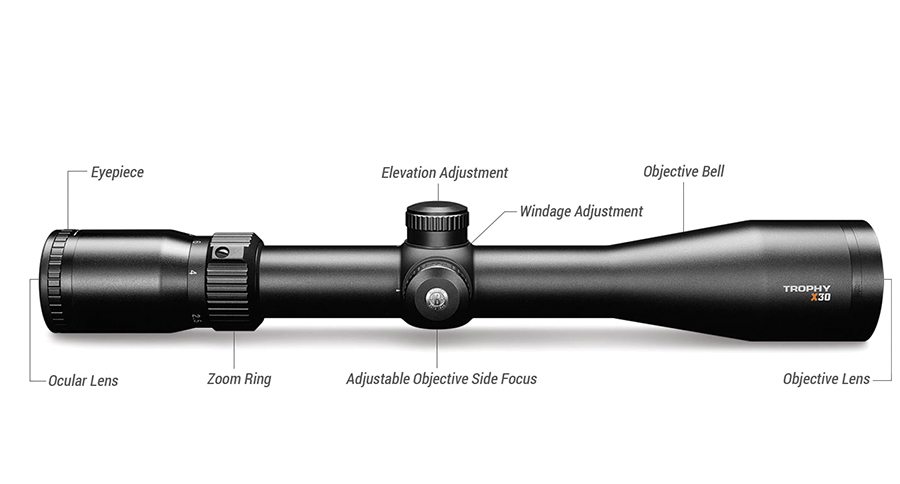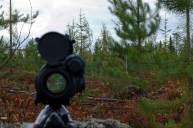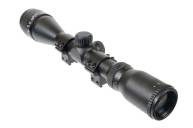A surprising number of people don't understand the basic features of optics but are too embarrassed to ask. End the shame right here.
Here's a further discussion and recap of what is covered in the video:
1. How do I understand those scope dimensions?
Magnification Range: The first number is the magnification range (e.g. 4-12). There are three groups of magnification ranges:
a. Low Power: (e.g. 1.5-6x 32mm, 2-7x 32mm) These riflescopes are ideal at close range and for shooting moving targets. They provide the most effective light management and produce a brighter sight picture and wider field of view, even in low-light conditions and thick brush.
b. Medium Power: (e.g. 3-9x 40mm, 2.5-10x 50mm) Select these riflescopes for hunting big game at medium range.
c. High Power: (e.g. 6-18x 40mm, 6-24x 40mm) These riflescopes are best for target shooting when the target is motionless, and for varmints and other small game.
Objective Bell Diameter: The second number is the objective bell diameter (NOT the objective lens size) so you can mount the scope properly. You need to look further down the list of specs to find the scope's lens size.
2. What's a fast-focus eyepiece?
All a fast-focus eyepiece does is reduce eye fatigue. It's not technically part of focusing on the target; it's about the marksman's comfort.
3. What's the side focus good for?
This becomes useful in correcting for parallax error (also known as crosshair travel) over a range of distances. For instance, if your target moves from 100 to 300 yards, but your factory parallax distance is 100 yards, you want to use the side focus to make sure your point of focus matches your point of impact.
4. Why would I want a capped scope over a resettable target scope?
A capped dial is optimal for hunting and trekking through the brush rather than long-range tactical shooting.
5. Do electronic dot sights have the same features and designations?
Yes, your knowledge is transferable to some extent! Stay tuned for an FAQ about the differences between choosing a red dot sight vs. other kinds of optics.
For a great brush-up on optics terminology, such as "parallax," "eye relief," and "exit pupil," check out Bushnell's optics tech talk page.
NEXT: WATCH: MAN NARROWLY MISSES BEING HIT BY LIGHTNING ON HIS TERRACE




